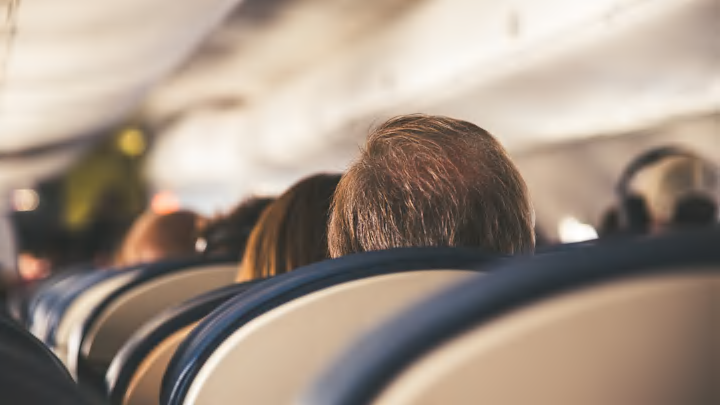While traveling on an airplane is the fastest and most convenient way to cross a large area of land or ocean, it also leads to some uncomfortable situations that you don’t have to deal with on the ground—namely, more farts.
Whether you like it or not, passing gas is a fact of life: Everyone does it. Though we often try to be polite about it, especially in public spaces, sometimes we have no choice but to let one rip. Farts can be tough to hide, though, in a place as small and confined as the cabin of an airplane. Once you’re inside one, you might even start to notice that it seems like other people are farting up a storm too. As it turns out, there’s a real scientific explanation behind it.
Below, we break down why people seem to fart more on airplanes, plus what foods to avoid so you aren’t so gassy ahead of your next trip, and how to manage your gas output during air travel. We even included a little science experiment to conduct during your next flight to see gas buildup in action. Let’s take a closer look.
Why We Fart More on Airplanes
Flatulence is created from buildup of gas in the bowels. During the digestion process, undigested food goes from the small intestine to the large intestine. Bacteria then devours and absorbs it all before releasing it as gas, like yeast in dough.
On the ground, we experience one atmosphere of pressure at about 14 pounds per square inch (PSI), and most folks fart about 12 times per day on average. However, airplanes have much lower pressure. At about 7000 feet above sea level, plane cabins are pressurized at around 11 PSI. The lower the air pressure, the more bloated you feel. This makes the gases in your body expand, which causes your ears to pop, and also accounts for why you have more toots in the sky.
You can actually conduct your own science experiment to see gas expand in action. Next time you’re on a flight, bring a small bag of unopened potato chips with you. The air that’s sealed inside the bag will expand like a pufferfish within about 20 minutes after takeoff.
Additionally, if you open the bag, the gas will rapidly escape, which may cause a mess (so watch out). Not only that, but because the bag is so bloated, it may be difficult to get a firm enough grip on it to open it up. You can give it a try, though, and see it all go down in real time—just maybe wait until the person sitting next to you gets up to go to the bathroom.
How to Manage In-Flight Gas—and What Foods to Avoid in the First Place
If you’re experiencing extra gas during flights, it’s probably best to just go ahead and let it rip. An airplane’s air filtration system is designed to absorb and neutralize pungent odors, even smelly farts.
And sure, maybe you catch a whiff here and there when you’re on board a long flight—but chances are, everyone else around you is dealing with the same influx of gas in their bowels, so don’t freak out. No one will probably suspect you of breaking wind mid-flight unless you make a big deal out of it.
But if you’re looking to avoid the social faux pas of farting in public in the first place, then it’s best to avoid eating certain kinds of foods, too. Specifically, try to skip snacks and other chow that might be high in carbohydrates, such as bread and pasta. Carbonated beverages, like soda, might make you prone to swallowing more air when you’re on a flight, which can exacerbate issues with bloating, too. Foods with low fiber content—including bananas, eggs, and white rice—are a better option if you’re trying to have less gas. It’s also best to eat slowly, which helps your body digest foods more efficiently.
Read More About Travel:
